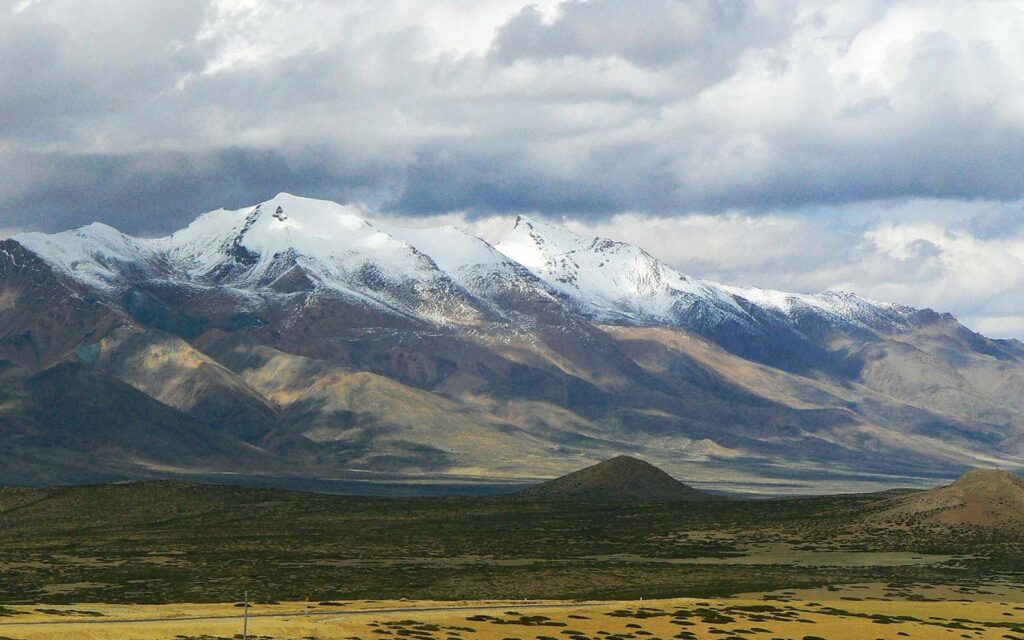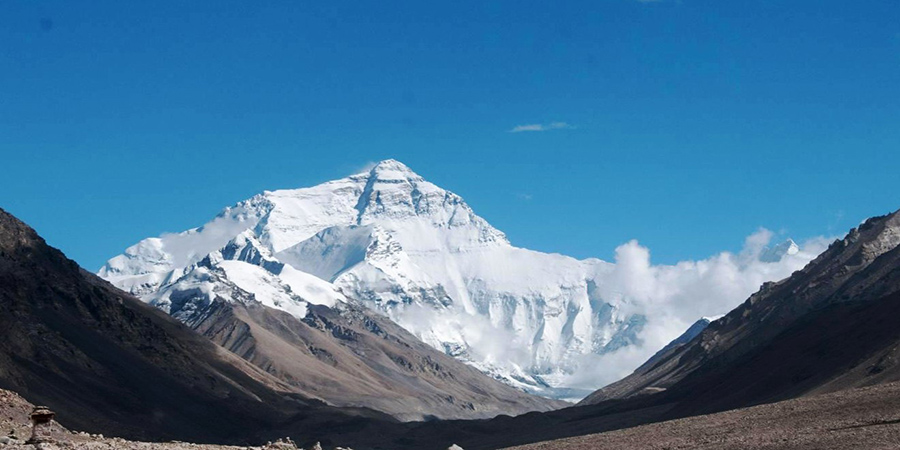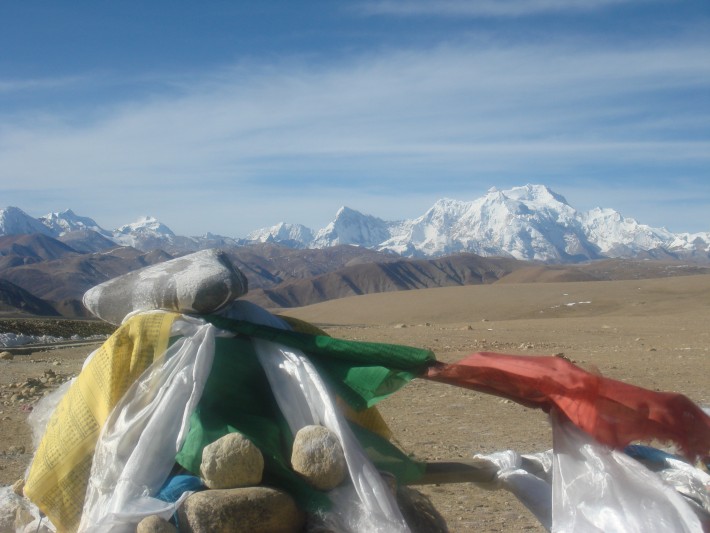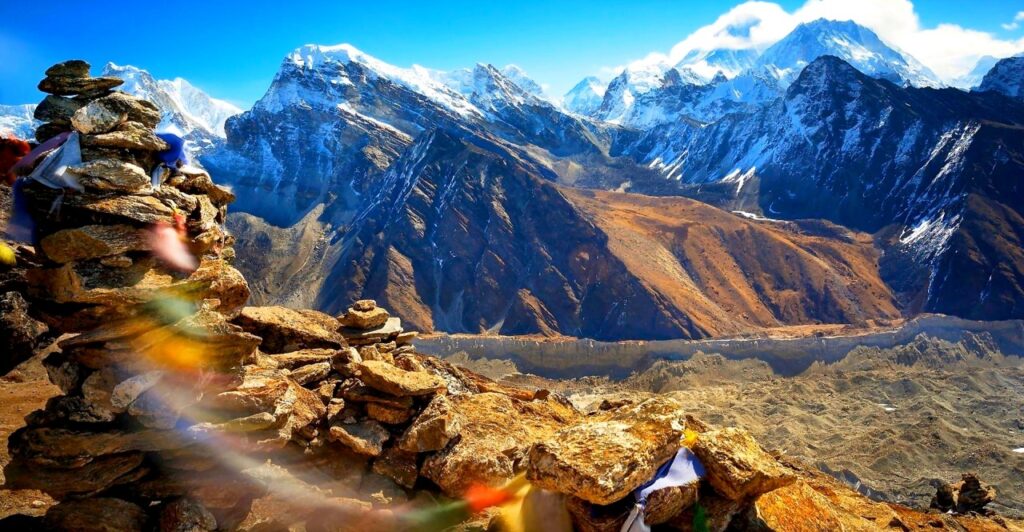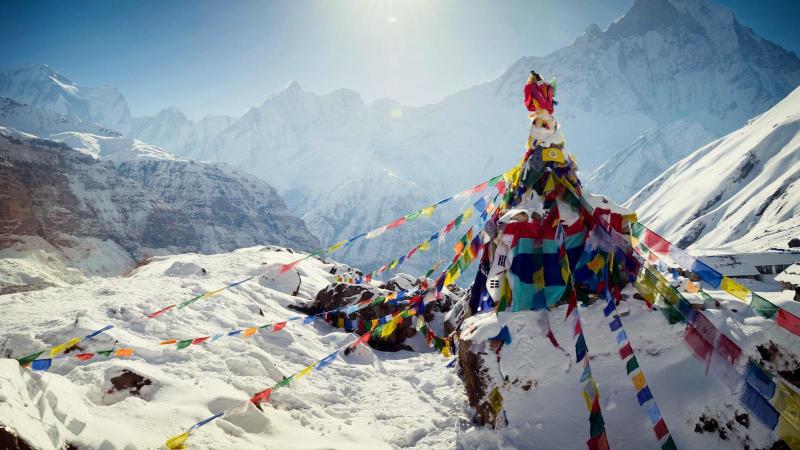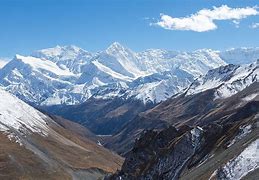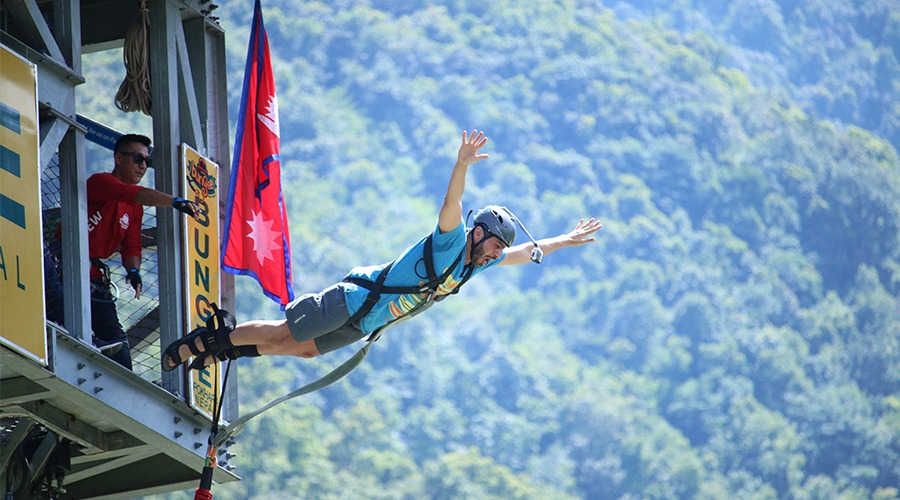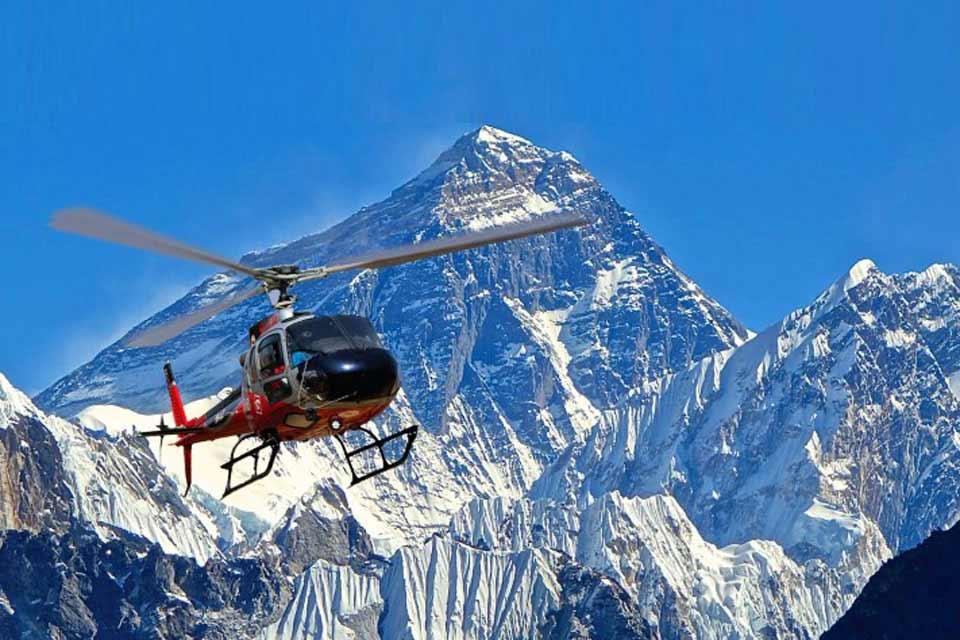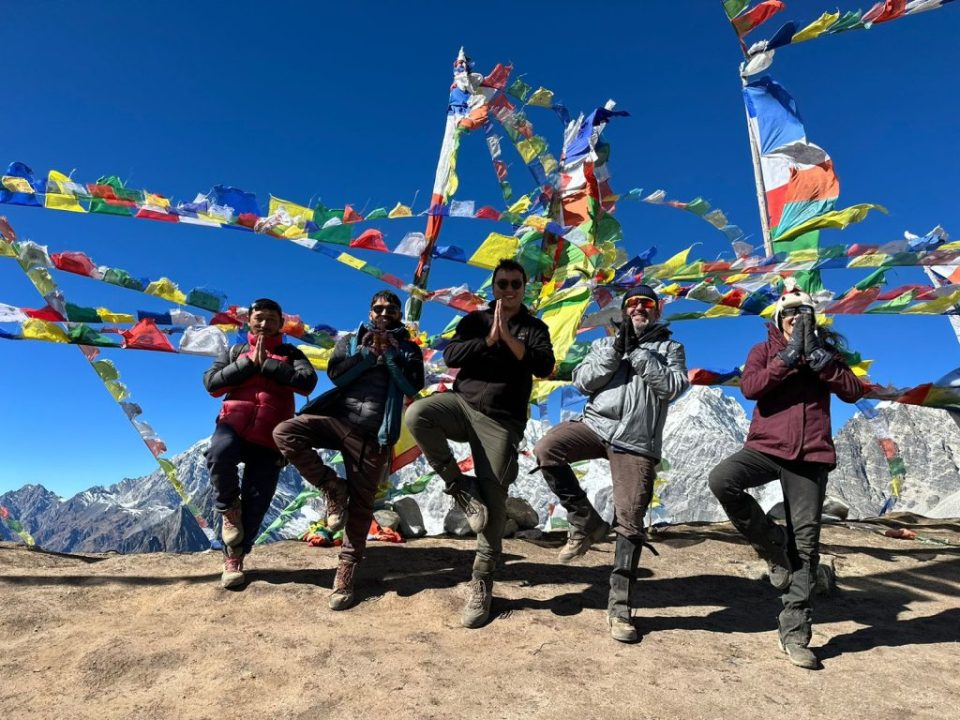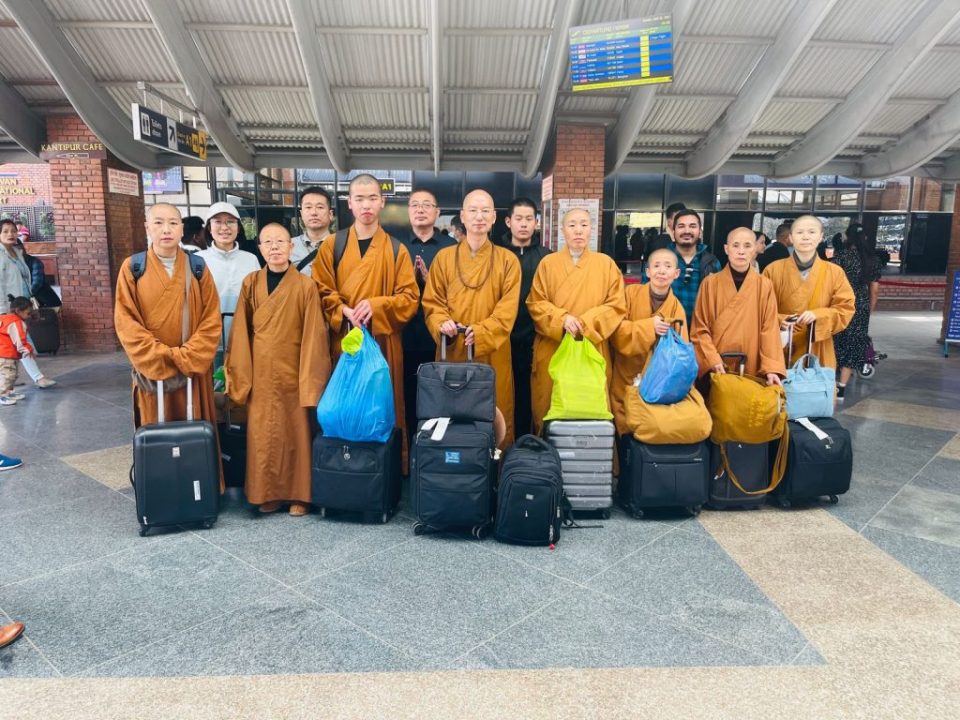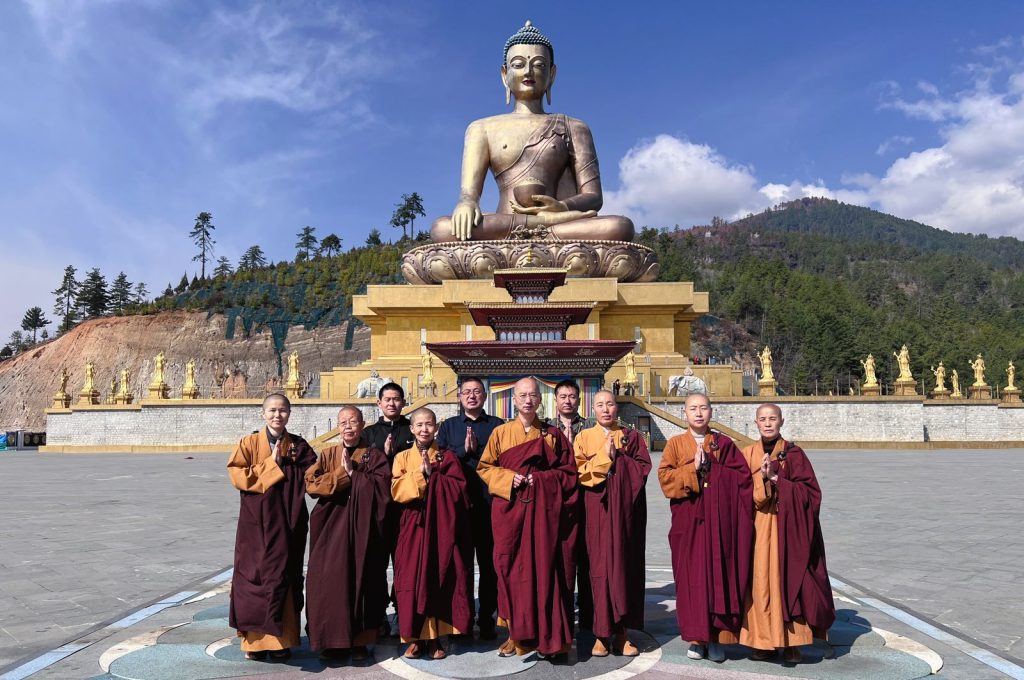LHASA EBC TREK
Fitness Level
EasyTrip Introduction
Tibet is the world’s highest country, with an average elevation of 4,380 meters in the Himalayas and Mount Everest as its highest peak. Tibet is a Chinese autonomous territory located on the high Tibetan plateau on the northern side of the Himalayas. Because of its towering peaks, it is regarded as the “Roof of the World.” Lhasa is the capital of Tibet. This Lhasa to EBC tour visits Lhasa, Gyantse, Shingatse, and Rongbuk, which are all attractive and ancient towns. We will see the most famous landmarks in Tibet, such as the Potala Palace and the Norbulingka Palace, as well as traditional Tibetan sites. We’ll also see the stunning peacock blue-colored Yamdrok lake, which we’ll cross numerous passes to get to.
The journey from Lhasa to Everest base camp region will take you from the modern Tibetan capital of Lhasa to pristine high-altitude lakes, rivers, glaciers, farming valleys, and through the Himalayas to the Everest base camp region at Rongphu monastery at roughly 5100 meters/ 17000 feet. Some of the remarkable Tibetan monasteries we will pass through are Sera, Drepung, Jokhang Temple, Khumbu Stupa, Tashi Lumpha, and others.
Everest Base Camp is the first base camp of Mount Everest, which opened in the 1920s and is located in the southwest of Tibet. Every year, thousands of tourists travel to Tibet in the hopes of catching a sight of Mount Everest, the world’s highest peak.
Trip Facts
| Country | Lhasa, Tibet (China) |
| Maximum Altitude | 5,150m/ 16,900ft |
| Grade | Easy |
| Best Season | Apr -Oct |
| Accommodation | Hotel and Lodges |
| Highest Point | 6,640m/ 17060.37 ft |
| Meals | Breakfast, Lunch, and Dinner |
| Attraction | Potala Palace, Jokhang Temple, Drepung Monastery, Sera Monastery, Rongbuk Monastery, and EBC |
Trip Highlights
- Explore interesting Tibetan culture and history.
- Visit Potala palace from 1649 to 1959 It was the winter palace of the Dalai Lamas.
- Visit Jokhang Temple which was built for two brides of King Songtsen Gampo during the Tibetan Empire’s rule.
- Explore Drepung, the largest of all Tibetan monasteries which is located on the Gambo Utse mountain range.
- Visit Sera Monastery which is also known as Wild Rose Monastery.
- Explore the trails used by Everest summiteers as you walk along the north face of the mountain.
- Take in the breathtaking views of the majestic mountains.
Is this trek appropriate for you?
- This tour lasts eight days. Every day, you will be driving for 8 to 9 hours, reaching elevations of over 5000 meters.
- This is the tour for you if you want an adventurous experience. You will be driving at a high altitude.
- you will be enjoying the unique culture and the history of the Tibetans.
- Along the route, the epic road adventure passes by historic Tibetan monasteries and fascinating natural scenery.
- Tibetan cuisine includes Butter tea, Tsampa, Sweet Tea, Yak Meat, Tibetan Noodles, Tibetan Yogurt, Himalayan Barley Wine, Tibetan Mo: Mo, and Sheep Blood Sausage, among others which you could enjoy during your trip.
Brief Itinerary
| Day | Activities | Duration |
| 1. | Flight to Gonggar Lhasa Airport (3,656m/ 11994. 75ft) | |
| 2. | Sightseeing of Potala Palace and Jokhang Temple (3,700m/ 12139. 11ft) | |
| 3. | Sightseeing of Drepung Monastery and Sera Monastery (3,850m/ 12631. 23) | |
| 4. | Drive from Lhasa to Shigatse via Gyantse (3,845m/ 12614.83ft) | 8-9 hrs |
| 5. | Drive from Shigatse to EBC (3900m/ 12795.28 ft) | 7-8 hrs |
| 6. | Drive from EBC to Shigatse (6,640m/ 17060.37 ft) | 7-8 hrs |
| 7. | Drive from Shigatse to Lhasa (3,656m/1199.4ft) | 4-5 hrs |
| 8. | Final Departure |
Itinerary
Departure from : Kathmandu, Nepal
Arrival On : Kathmandu, Nepal
Day 1
Flight to Gongaar Lhasa Airport
You will be greeted with a warm smile when you arrive at Gongaar International Airport. Our representative will greet you at the airport and transport you to your hotel. Proceed to the hotel and check in. Our guide will meet you in the evening and give you a quick overview of the trip. I’m staying at a hotel for dinner and the night.
Day 2
Sightseeing of Potala Palace and Jokhang Temple
Today marks the start of your tour. After breakfast, you will depart for Potala Palace, also known as the Winter Palace of Dalai Lama. From 1649 to 1959, it served as the palace. Since then, it has been a museum. After lunch, you will depart for the Jokhang Temple, a Buddhist temple located in Barkhor Square. It is regarded as Tibet’s most sacred and holy temple. The temple was constructed during the Tibetan Empire’s Songtsen Gampos era. The temple was created for the king’s two wives, Chinese princess Wencheng and Nepalese princess Bhirkuti. You will be enjoying Tibetan food and culture. Dinner and overnight stay at hotel.
Day 3
Sightseeing of Drepung Monastery and Sera
In the morning, after breakfast, you will visit Drepung Monastery, which is one of Tibet’s major three “Gelung” Monasteries and is situated at the base of Mount Gephel. After lunch, visit the Sera Monastery, commonly known as the Wild Rose Monastery. The original Sera Monastery is in charge of 19 hermitages, including four nunneries in the foothills north of Lhasa. Dinner and overnight stay at hotel.
Day 4
Drive from Lhasa to Shigatse via Gyantse
Drive from Lhasa to Shigatse in the morning after breakfast. Drive over the Gampala pass on the way, and you’ll get a view of Yamdrok-Tso. The lake is ringed by many snow-capped mountains, with breathtaking views of Holy Mount Nyenchen Khangsar, the highest peak near Lhasa, in the distance. Later, we’ll drive by the Korola Glacier and stop to admire it from the roadside; at Manak Dam Lake, you can hang a prayer flag at Simila Mountain Pass and stop for lunch along the way. Then we’ll travel to Gyantse, Tibet’s third-largest city historically (after Lhasa and Shigatse. In Gyantse, we’ll see the renowned Pelkor Monastery and Gyantse Kumbum, as well as the Gyangtse Fortress from afar. After a one-and-a-half-hour ride, we will arrive at Shigatse, Tibet’s second-largest city. In Shigatse, we can visit a historic Barley Mill and see the Barley Field panorama in the summer. Dinner and overnight stay at hotel.
Day 5
Drive from Shigatse to EBC
We will visit Panchan Lama’s house, Tashilunpo Monastery, in the morning after breakfast. Then, after receiving your Alien Travel Permit, we’ll leave Shigatse and go to Lhatse, a little village where you can have lunch. Then we’ll pass through Tsola Pass and Gyatso La Pass. We enter the Mt. Everest National Nature Reserve shortly after. Then we go to Everest Base Camp along the New Zigzag Road. You can get closer to the summit of Mt. Everest. If time and weather allow, a sunset view of the golden Everest summit from the hotel area. Dinner and overnight at the hotel.
Day 6
Drive from EBC to Shigatse
If the weather is clear, you may watch the sunrise over Everest Peak from the hotel area in the morning. After Breakfast, you will Then go to the Rongbuk Monastery, the world’s tallest monastery, where nuns and monks coexist. Finally, we’ll return to Shigatse via car. Dinner and overnight stay at hotel.
Day 7
Drive from Shigatse to Lhasa
Today, after breakfast, we will drive back to Lhasa via Yalong Valley. From the viewing platform, you can see the entire Yalong River bed. Finally, you will be transferred back to your Lhasa hotels. Dinner and an overnight stay at the hotel.
Day 8
Final Departure
The eight-day tour has come to an end. After a hearty breakfast, our representative will transport you to the airport. 3 hours before your flight.
Route Map
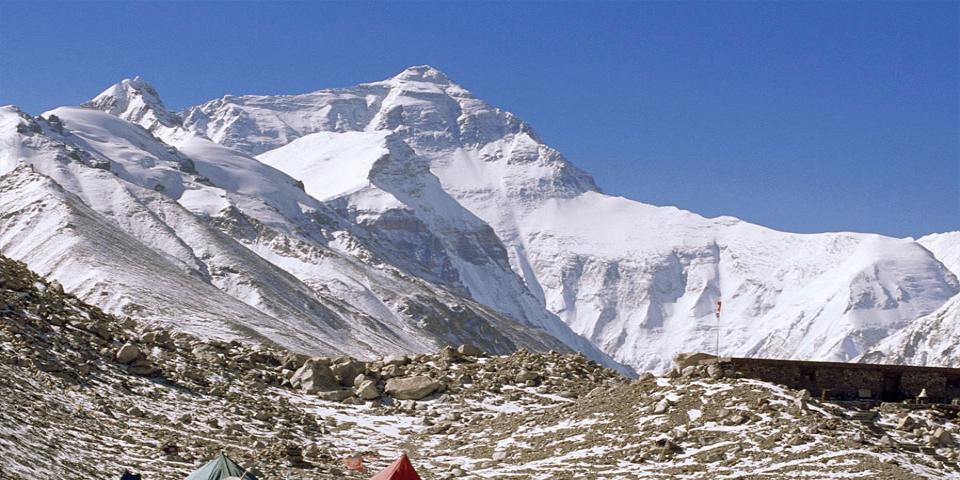
Altitude Map
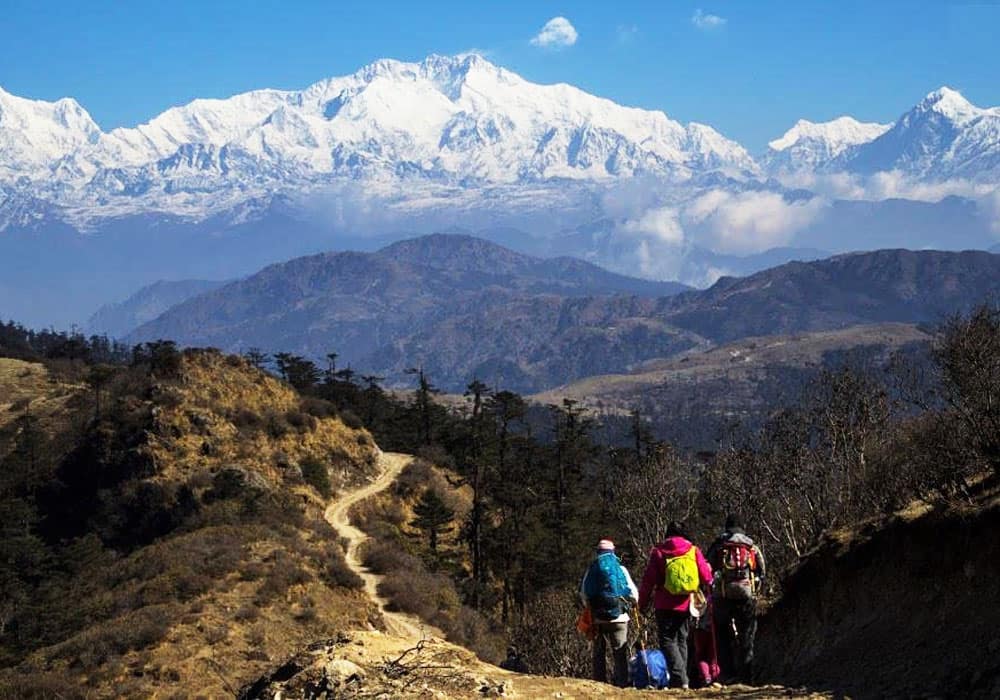
What's Included
- Arrival and Departure: Airport picks up and drops off, transfers and sightseeing on a private basis.
- Accommodation in star category hotel in Tibet (Twin sharing basis).
- Food: 3 meals a day (Breakfast, Lunch, Dinner)
- Tibet Travel Permit, Alien Travel Permit, Foreign Affair Permit, Military Area Permit.
- All government and local taxes if necessary.
- Drinking water: 2 liters of boiled water per day per member.
- Guide: Tibetan Guide or Government licensed Guide (English and Local language speaking).
- Comprehensive medical kit.
- Sim card to per member.
- Assistance to acquire a visa to China.
What's Not Included
- Air Fare: International flight (from and to China)
- China entry visa fee.
- Extra night at China or Tibet other than the scheduled itinerary.
- Personal Travel insurance.
- Personal Expenses: Telephone calls, Internet cost, VPN, Toiletries, laundry, soft drinks, and any alcoholic beverage.
- Rescue Evacuation.
Equipment List
What to bring ?
General
Tailor Your Holiday
Everyone has their own preferences in terms of destination, journey time, and budget. As a result, sticking to our plan isn't necessary. We will create a personalized itinerary for you that includes accommodations, transportation, meals, and tour guides. We guarantee you the best Tailor-made Package because this is your trip. You have the option to personalize it, as your liking. Let us Plan together to make your Vacation worth it.
Fixed Departure
Why Travel With Us?
Secure Online Payment, No Credit Card Fee
24/7 International Support
Travel with Locals. Support Locals
Support Local Communities & Donate to Charity
Lifetime Deposit
All Inclusive Price
Private & Tailor-Made Trips
Secure Online Payment, No Credit Card Fee
The Ideal Time to Travel
The perfect time to visit Tibet is from April to October each year when the weather is pleasant and the scenery is breathtaking. The average temperature is higher than 10°C, and the oxygen content is higher than in other seasons. It is also popular for the tourist season in Tibet. Because of the high altitude in Tibet, the temperature is usually lower than in any other city in China during the same season; it’s a little harsh with thin air, strong ultraviolet rays, and distinct rainy and dry seasons.
Spring: The spring season begins in March and lasts through May The weather is starting to warm up, but the temperature remains cold as the ice melts, demanding the use of a long coat, a warm sweater, and a jacket. Tibetan spring, however, is still chilly, snowy, and icy due to the high altitude. The humid and warm airflow cannot reach the core area due to the blockade of the huge Himalayas Ranges. Mt. Everest can be seen clearly in this season.
Summer: From June until August, the summer season begins. It’s a peak tourism season in Tibet. Many festivities, such as the Ganden Thangka Festival, Shoton Festival, and Nagqu Horse Racing Festival, are held in Tibet during these three months, and you may still enjoy the cleanest view of Mt. Everest. T-shirts, long-sleeved coats, sunglasses, and sun protection are all required.
Autumn: Autumn begins in September and ends in October. During these two months, the weather is most pleasant, with plenty of sunshine during the day, and the scenery is particularly lovely. It would be fine to wear garments that are similar to those worn in the spring.
Winter: Winter begins in November and lasts until February. Because of the weather, fewer individuals prefer to travel to Tibet in winter, but it is less crowded and tour prices are lower than other months. You may still participate in the Tibetan New Year (between January and February) and the streets will be colorfully painted for this. Warm sweaters and down coats are required, and comfortable athletic shoes are strongly advised in all weather conditions.
Flight to Lhasa, Tibet
- The Gonggar International Airport in Lhasa serves as a key air gateway in or out of Tibet.
- Except for Nepal, numerous countries such as the United States, Singapore, the United Kingdom, Australia, Canada, India, Hong Kong, and other overseas locations do not have direct flights to Tibet.
- Lhasa Gonggar International Airport is near Jiazhulin Town, a couple of miles from the Tibetan capital.
- Gonggar International Airport is located at a height of approximately 3570 meters. To reach the heart of Lhasa, it takes 60-90 minutes.
- Because Lhasa is located at a high altitude, it is recommended that you get enough rest after you arrive at your hotel in Lhasa before beginning your tour.
Altitude Sickness
Anyone planning a trip to Tibet should be aware of what altitude sickness is, what causes it, and how to cope with the symptoms of this possibly deadly illness. Altitude sickness is the most serious medical danger when visiting Tibet; an altitude of more than 3000 meters is considered high altitude. Tibet is a mountainous region with an average height of around 4000 meters. Most places where people can go and hike are higher than 3000 meters, therefore travelers should be aware of how to avoid altitude sickness. Tibet should not be visited by someone with a serious heart condition. Before traveling, those with high or low blood pressure should visit a doctor.
Symptoms
- Increased breathing.
- Increased urination.
- Restless sleep.
- Periodic breathing at night because of altitude.
- Dehydration.
- Shortness of Breath.
- Extreme fatigue.
- Respiratory failure.
- Cerebral edema.
- Coma.
There are, however several other precautions you may take to reduce your risk of getting altitude sickness while traveling to Tibet.
- As the air gets increasingly thin, an increase in elevation reduces oxygen levels, and in Tibet. Avoid the consumption of alcoholic beverages, cigarettes, and tobacco that decreases the body’s water content.
- The greatest remedy is to always stay hydrated. Instead of drinking cooled water, drink warm water.
- Avoid sleeping pills to treat insomnia because they suppress breathing.
- Diamox is the most effective altitude sickness medication; however, you should consult with your physician to see whether it is advantageous.
- You should prepare yourself physically and mentally before traveling to Tibet.
Things to know before traveling to Tibet, China.
Drinking-Water
Tibet has some of the world’s most abundant water resources. Tibet’s lakes, rivers, numerous fresh springs, and dozens of Himalayan glaciers serve as the main water sources for the entire South Asian region. Tibet’s high-altitude plateau is also the home to six of Asia’s longest rivers.
Despite having abundant water resources and serving as the primary source of water for billions of people in South Asia, Tibet’s drinking water remains a big issue. Lakes and rivers contain toxic water that should not be consumed directly. Because tap water is not treated, it might result in you feeling sick.
As a result, Tibetans drink boiled water or bottled mineral water. We recommend consuming boiled or bottled water even to brush your teeth and wash the fruits as well. Many mineral water companies in Tibet purify and filter natural glaciers using a unique technology that makes the water consumable without the need to boil it. Bottled Mineral water can be purchased at a low cost. It costs 3-4 yuan (60 cents) for 500ml of bottled water and 7-8 yuan (2$) for 1.5 liters.
Not to drink the water that has not been boiled or purified. The water needs to be boiled at least for 10min at 90degree. Purifying tablets is not advised because Boiling kills bacteria more effectively than purifying tablets. Ultraviolet light /SteriPen is also a highly recommended means of purifying water, an expensive but one-time investment.
Generally, most of the hotels, lodges, guesthouses have constantly heated pots of water for drinking and other purposes. So, you can get boiled water free of cost anywhere you stay. For Bottled water, our representative will provide you 2ltr of bottled mineral water per day.
Network service and Internet Facility
As network connectivity is required in any trip/vacation to any location to stay in touch with your loved ones. Here is some information regarding China’s network that you should be aware of and check before traveling to China.
About your phone
China has three major cellular service providers: China Telecom, China Mobile, China Unicom. To use these China’s networks during your trip, your phone must be compatible with these networks. It’s possible that your phone will not work or support the Chinese network. So that, first you have to ensure that your phone work in China. To do so, you have to go to willmy.phonework.net and check whether or not your phone will work in China. There you will get information about whether or not your phone operates in China, as well as mobile frequencies and network compatibility. Contact the phone service provider if you are facing any difficulty regarding your phone frequency before traveling to China.
If your phone is compatible with the China network’s frequency. You can either request your phone’s service provider to activate the mobile roaming service or you can buy a local China network sim card that works with your phone. Most of China’s network has a roaming agreement with the international network. So, once the roaming service is activated, simply turn on the roaming setting on your phone to connect to the local network. After that, you can use your sim card for international calls, texts, and internet access. We recommend purchasing a local sim card because making international calls from Tibet with your regular sim card is extremely expensive and also you won’t be able to use services like Gmail, Facebook, YouTube, and others that you might use in your home country.
If your phone does not operate on the Chinese network, ask your agency to rent you a phone in China with a Chinese sim card to use during your visit.
About China’s Sim Card
Purchasing a local SIM card in China before traveling to Tibet, is highly recommended because it is much cheaper and time-saving than paying a large international roaming service bill. You can purchase a Sim card in any China airport, train station, or mobile vendor store.
The major cellular service provider of China is China Telecom, China Mobile, China Unicom. These networks have a good signal range up to Tibet’s Everest Base camp. If you are buying a local sim card, here is some guidance that can help you to use these local Chinese sim cards.
- Go to a mobile phone vendor and ask for a compatible sim card for your phone.
- Tell the staff about the SIM card size and buy the SIM Card.
-Show your passport with a valid Chinese visa.
-Payment can be done by cash, bank, or WeChat pay.
- Ask for the mobile package brochure and select a package from the list.
- Purchase the data plan and register your phone number.
- You can also ask them to top up your mobile by paying extra or you can simply do with WeChat pay.
Documents needed to buy a SIM card
- 1 passport size photo
- Passport with valid Chinese visa.
(Payment can be done by cash; bank card or WeChat pay)
Note- Your phone must be unlocked to use China’s local Sim Card.
Internet facility in Tibet
Although Tibet has developed later than other countries, every village in Tibet currently has Broadband internet connectivity with 4G coverage. After the China mobile installed the 5G base station on the Advance Base camp of Mt. Qomolagma of Tibet, you can have excellent internet service even at such high altitudes. Because Lhasa is Tibet’s capital, it has a stronger internet signal than the rest of the area of Tibet. You can use all 3G, 4G, and 5G network coverage throughout Tibet. Free Wi-Fi is available in almost every hotel, lodge, and guesthouse in Tibet. However, since the hotel’s Wi-Fi is shared, the speed may be slower.
In China, you can also hire a Pocket Wi-Fi to enjoy a steady internet connection. Pocket Wi-Fi, also known as a mobile hotspot/ MI-FI in China, is a portable wireless hotspot. Pocket WI-FI is cost-effective, as it includes 3G and 4G network access as well as limitless data usage. With this Pocket WI-FI, you get full internet access with unlimited data consumption everywhere in China.
Despite having access to the internet, you will not be able to use Google, Gmail, Facebook, Instagram, or Twitter in China without VPN. To do so, you must purchase a VPN package from the best VPN seller in China. Don’t purchase a VPN without checking whether it works or not in China.
Things to bring on your trip to China.
Travel documents
- Airline tickets with the itinerary.
- Travel insurance policy documents.
- Valid passport with Visa of China.
- Copies of passport.
- Passport- size photos.
- Yuan currency or US currency.
- Travel permits.
Clothing
Tibet’s climate is one of a kind in the world. Although Tibet is known as the Land of Snow, the climate in Tibet is normally dry. Tibet, like other countries, has four seasons in a year as well as monsoon. So, you then have to prepare your clothes considering the temperature of the season, in which you are traveling.
Winter (Dec-Jan-Feb)
During the winter, Tibet is completely covered in snow you need to bring warm clothes. In this season, the average temperature will be between Max. -2° C and Min-20° C. For the wonderful winter trip to Tibet, you had to bring a thick sweater, jackets, warm shoes, a woolen cap, and sunglasses.
Spring (Mar-Apr-Feb)
It is the warmest season in Tibet. The average temperature of this season will be between Max. 5° C and Min-15° C. The best pick of clothing for this season includes sportswear, a thin sweater, and a jacket.
Summer (Jun-Jul-Aug)
It is Tibet’s hottest season. The sun’s heat is particularly hot this season. The average temperature of this season will be between Max. 15° C and Min 3° C. Long-sleeved shirts and pants and hats or caps are strongly suggested to prevent sunburn. Monsoon rain can have an impact on the weather throughout this season.
Autumn (Sep-Oct-Nov)
This season’s weather is warm or chilly. It’s a fresh time. The average temperature of this season will be between Max. 13° C and Min-10° C. Comfy sportswear and the thin sweater are the best picks of clothing for this season.
Note- Although the day may be pleasant, the evenings are normally cold in Tibet. During the night you must wear warm clothes. You must pack warmer clothes every season if you are traveling at a high altitude.
Toiletries
- Wet Wipes and Tissue.
- Towels.
- Toothbrush and toothpaste,
- Hand sanitizer.
- Sunscreen, lip balm, body lotions.
- Deodorants.
- Shampoo and soap.
Personal items and First Aid kit
- Reusable water bottle.
- Plug adapter, Charging appliance, power bank, batteries.
- Pocket knife.
- Travel wallet.
Accommodation and Meal
Accommodation
During our stay in Tibet, we will stay in a star hotel.
Meal
During the trip, we will provide you with 3-time meals.
Breakfast– Pancakes, Toast with Jam/ Butter/ Honey, Egg, Roti/Puri Tarkari, Aloo Paratha, Cornflakes, Oatmeal, Tsampa Porridge, Muesli, Upma, Milk/ Coffee/Butter Tea/ Horlicks.
Lunch – Dal Bhat set (Rice, Roti, veg curry, lentils, Salad, Pickles, Papad), Fruits, Chowmein, Noodles, Biryani, Spaghetti, Macaroni, Roti, Samosa, Sandwich, Thukpa, Mo:Mo (dumplings) etc.
Dinner– From the menu served by the hotels and guesthouses. The menu varied with Indian, Chinese, Tibetan, European cuisine, Soups and desert.
Besides these, there are a variety of other options of food. You can buy it from your pocket.
Guide and staff Arrangements.
In a foreign land, language is the main concern everybody finds problematic. If a language barrier occurs, your trip can be spoiled. And Tibet is the place you cannot travel alone. You will require a local language-speaking guide who is also fluent in English. We, therefore, give you a high experience and a certified local guide with good English proficiency. They accompany you and keep your everyday schedule appropriately and systematically during the journey. All your activities are handled by our highly qualified and professional team. We have a skilled and trained team and guide. So, we hope for your respect and cooperation with them throughout the trip.
China Tourist Visa and Permits details
Visa fee and Procedure
Many kinds of visas exist in China. However, we are traveling to China to visit, a Chinese tourist visa or L-visa is required, valid for the entire duration of your stay in China. You have to apply for an “L” Visa in your nearest Embassy of China. Here is the fee structure of the “L” Visa of China.
| Number of Entry | American | Citizens of other countries* |
| Single Entry | $140 | $30 |
| Double Entry | $140 | $45 |
Note- The validity of L-Visa is 30 days and the validity of L-visa for single entry or double entry is 90 days and 180 days respectively.
Here are the necessary documents needed to apply for an L- visa.
- The “L” Visa/Tourist visa Application Form (Complete online, signed, and printed).
- An original passport with at least 6 months validity beyond the duration of the visa you’ve requested, as well as two blank pages (amendments and endorsement pages not included).
- Photocopy of your passport’s information page.
- At least 2 recent passport-sized photos of yourself. (Background color: black, white, or red).
- Itinerary of valid round trip airline ticket confirmation.
- Proof of accommodation in China during your stay.
- Proof of your current residence. (Documents can be a copy of your Citizenship/ government ID or driver’s license, or a utility bill).
- Copy of your travel record.
- Invitation letter from a governmental agency or individual agency in China.
- Heath declaration form, as well as photocopy of both sides of your COVID-19 Vaccination Card.
- Minor travelers under the age of 18, should submit a copy of their birth certificate, copy of both parents’ passports or diver licenses, proof of current residency, a notarized letter of consent from both parents.
For more information click this link www.visacentral.com
Entry permits and Requirements
Every visitor to Tibet except Tibetan and Chinese requires a Tibet Travel Permit (TTP), popularly known as Tibet Entry Permit or Tibet Visa. TTP is issued by the Tibet Tourism Bureau, so it must be obtained via. an authorized local Tibet agency in China.
Additionally, we will be traveling up to the Base camp of Mt. Everest, you will require an additional permit: Alien’s Travel Permit popularly known as PSB permit issued by Public Security Bureau, Foreign Affair Permit issued by Foreign Affairs Office, and Military Area Permit issued by Military Office either in Lhasa or Shigatse once you get in Tibet.
Here is the cost of the permits for foreign travelers.
- Tibet Travel Permit
Tibet travel permit is one of the necessary permit documents you require along with a passport with a valid China visa before flying on the flight to Tibet or before boarding the train to Lhasa. You won’t be even able to book a flight to Tibet, without a Tibet visa.
| Permit Cost | 250-450CNY/ USD 40- 70$ (Per person) |
| Need permit who travel to | Tibet by both flight or by Train. |
| Working days | 15-20 days |
| Who needs permit | -All foreign traveler
-Chinese living in Taiwan |
| Who doesn’t need a permit | -Overseas Chinese with Chinese ID
-Residents of HK SAR (Hong Kong Special Administrative Region) -Resident of Macau SAR (Special Administrative Region) |
| Who can’t get this permit | -Diplomats
-Journalist/ professional media photographer -Government Officials -Indian Visiting Nagari. (They need to directly contact with Tibet Tourism Bureau) |
Since the Tibet Travel Permit cannot be delivered outside the mainland of China, you won’t be able to board a flight to Tibet without the original Tibet Travel Permit. During your connecting flight to Lhasa/ brief transit at a China airport, our agent in China will deliver the Tibet Travel Permit at the airport. But if you are traveling from Kathmandu, our agent will provide you, your Tibet Travel Permit in Lhasa.
- Alien Travel Permit
| Cost | 50CNY/USD8 $ (Per person) |
| Need permit who travel to | Beyond Lhasa (such as Mount Everest base camp in Shigatse, Samye Monastery in Tsedang, and others). |
| Working days | 2-3 hours |
| Who needs permit | All foreigners except Chinese and Tibetan citizen |
- Foreign Affair Permit
| Cost | 50-100 CNY/ USD 8-15 $ (Per person) |
| Need permit who travel to | To Mt. Everest, Mt. Kailash, Kham of Tibet Autonomous Region-TAR Section. |
| Working days | 1 month |
| Who needs permit | All foreigners except Chinese and Tibetan citizen |
- Military Area Permit
| Cost | 100-300 CNY/ USD 15-45 $ (Per person) |
| Need permit who travel to | To Mt. Kailash and Mana Sarovar in Nagari, Nyingchi, Shigatse, and Chamdo. |
| Working days | 15-20 days |
| Who needs permit | All foreigners except Chinese and Tibetan citizen |
Documents required to get Permits.
Tibet Travel Permit
- Photo image of your passport information page with a 6-month valid date.
- Photo image of your passport Chinese Visa page.
- If traveling from Nepal, fill up a form from the Chinese Embassy.
(Send through email or any other social media to your travel consultant.)
Alien Travel Permit/ Foreign Affair Permit/ Military Area Permit
- Original copy of Tibet Travel Permit.
- Original copy of Passport with valid China Visa.
- Original copy of your Tour guide’s certificate.
- Copy of Tour itinerary.
Note– The procedure for applying for a China visa and a Tibet permit is very complicated. So, you may let any authorized travel agency like us to apply for your China visa and Tibet permits.
We, Jugal holidays Pvt. Ltd is an authorized agency to provide Tibet permits so, to apply for or need any assistance for the permit, please contact as.
Travel Insurance
Before visiting any nation, it is recommended that you have travel insurance. Although China is a safe destination to visit. Travel insurance is required for the protection of both your body and your belongings. There is no specific China travel insurance plan. If you go to any insurance company to get travel insurance, they will present you with a variety of packages (Flight insurance, health insurance, medical coverage insurance), each with a different amount of coverage. There are plenty of risks that could spoil your trip. Some of them are-
- Domestic and International flight cancellation due to weather or any reason.
- Misplaced or stolen baggage or any other valuable property.
- Hospital/ medical and emergency rescue expenses due to any road traffic accident or high-altitude accident.
As a result, you must carefully select your travel insurance that covers the above threats. The price of the insurance plan you choose is determined by the destination, length of your trip, the age of the travelers, and the things you choose to be covered.
LHASA EBC TREK
Trip Reviews
Lorem ipsum dolor sit amet, consectetur adipisicing elit, sed do eiusmod tempor


